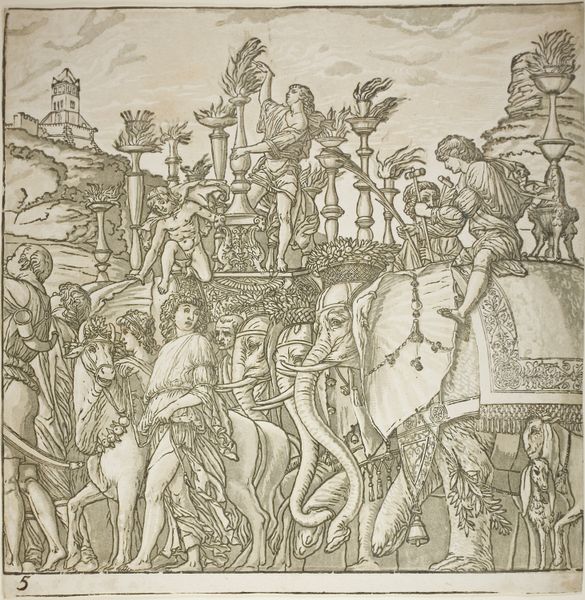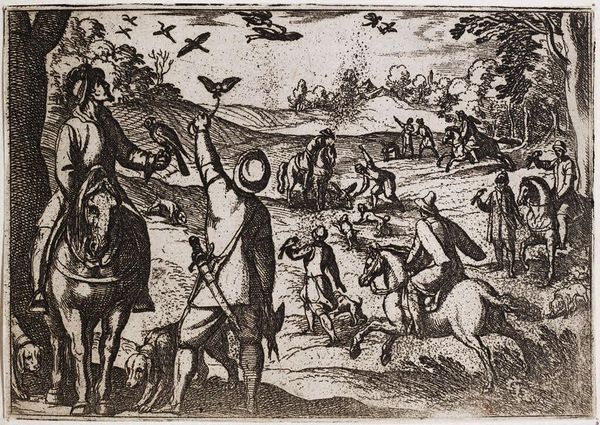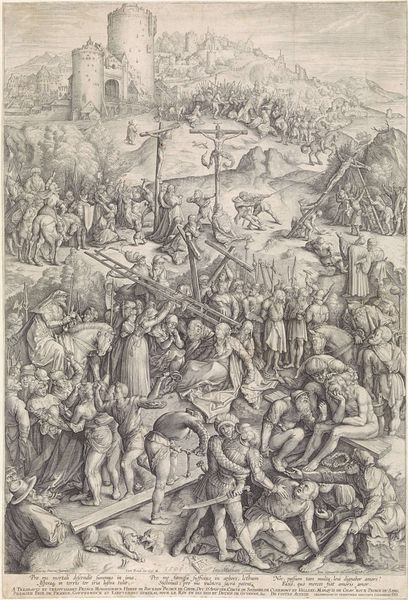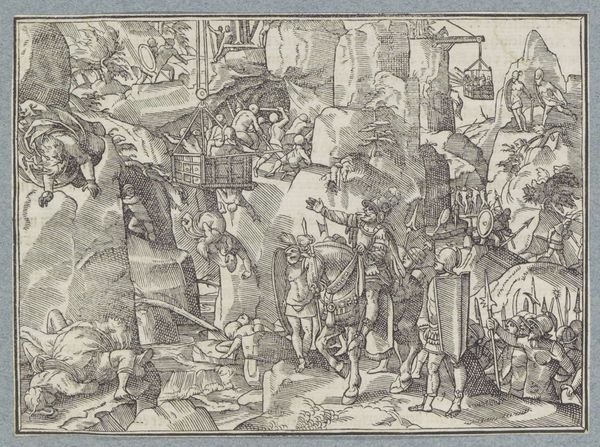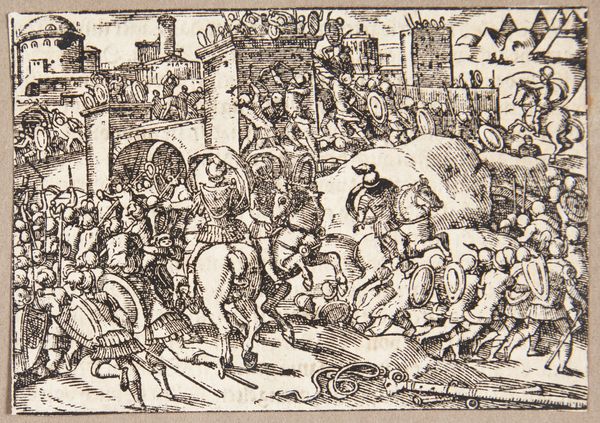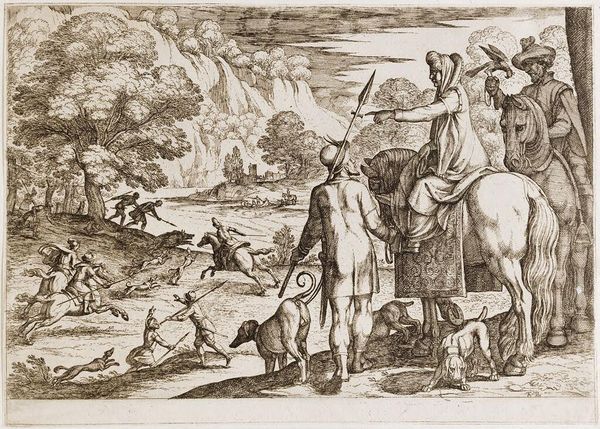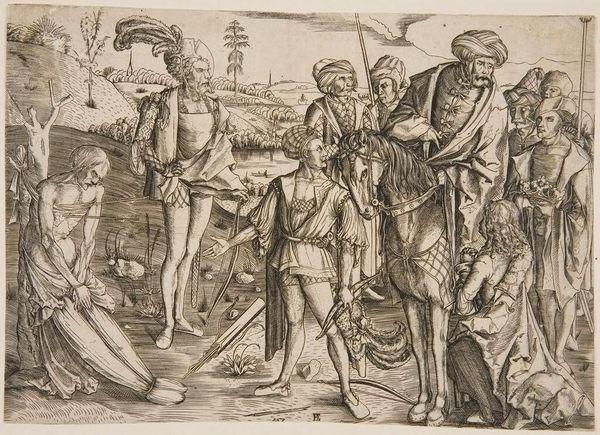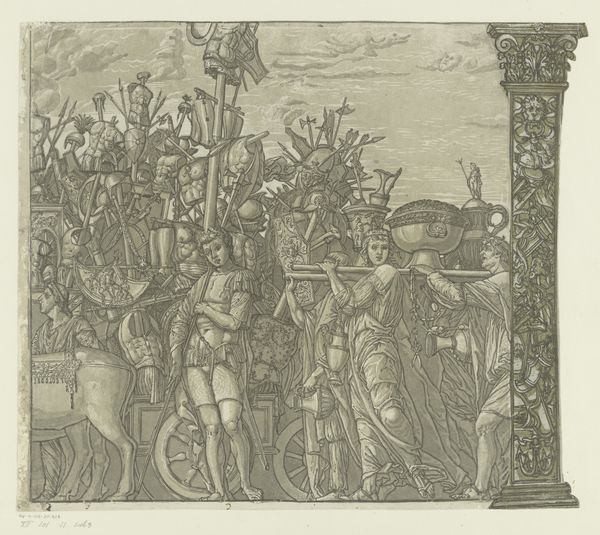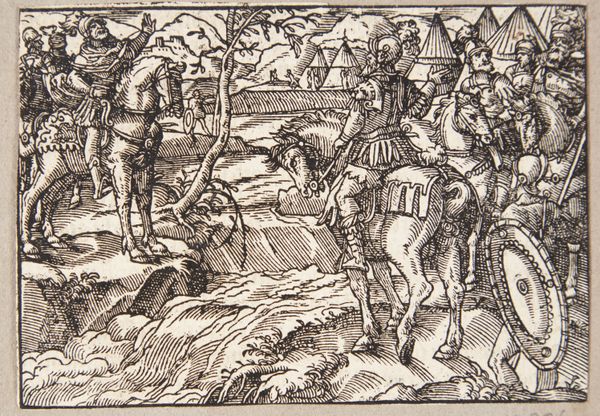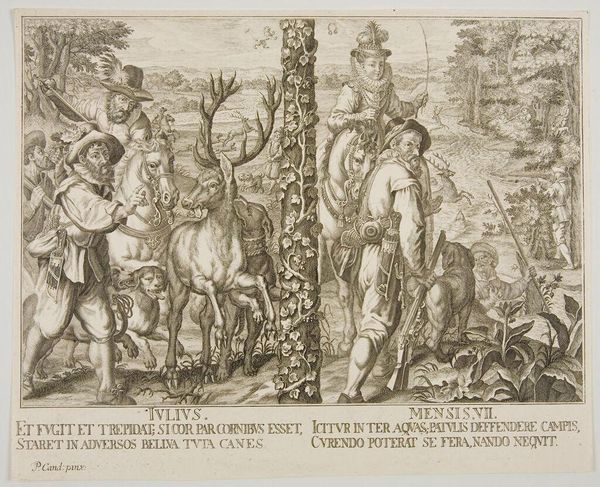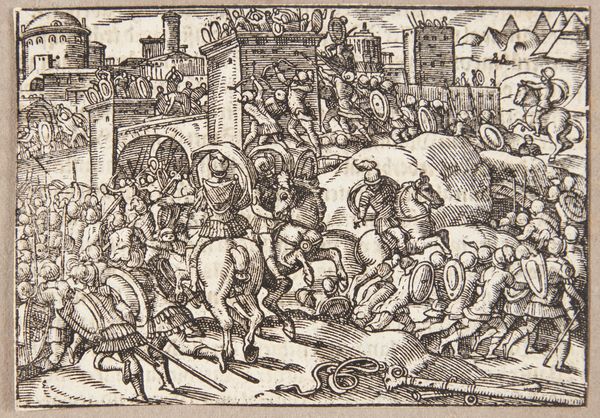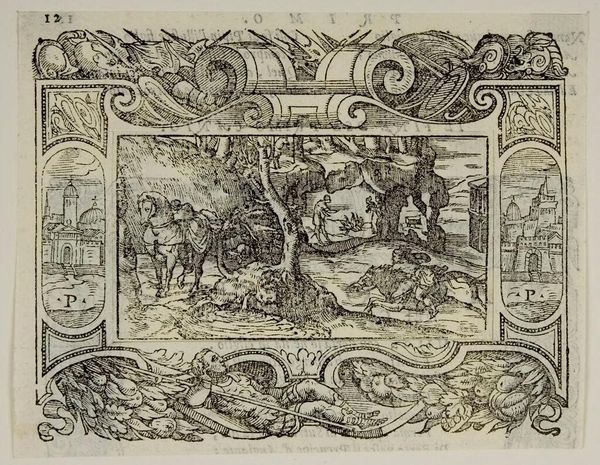
painting, fresco
#
narrative-art
#
painting
#
sculpture
#
landscape
#
figuration
#
fresco
#
oil painting
#
history-painting
#
italian-renaissance
Copyright: Public domain
Editor: This is Antoniazzo Romano’s "Stories of the Holy Cross," a fresco dating back to 1492. There’s such a fascinating narrative quality to it – like a comic strip from the Renaissance. What strikes me is how the historical figures seem to be set in such an idyllic landscape. What's your take on this piece? Curator: I'm drawn to how Romano uses this historical narrative, which was a popular theme at the time, to subtly promote the authority of the Church and the aristocratic patrons who commissioned the work. Think about where this fresco is likely located – a church, a space designed to reinforce faith. The idealized landscape naturalizes these power structures, suggesting they are part of the divine order. Editor: So, it's less about accurate historical depiction and more about conveying a specific message to its audience? Curator: Precisely. The figures, with their contemporary armor and garb, aren't just historical re-enactments. They're meant to connect with the viewers of the time. What details within the artwork do you feel help establish this connection? Editor: Maybe the positioning of the characters, their detailed armor and fine clothing for instance. And it’s easy to identify that religious figures are involved with that cross front and center! It makes me think about the intersection of power, religion, and artistic expression in the Renaissance. Curator: Exactly. This intersection is vital to understanding the social function of art during the Italian Renaissance. Remember that these artworks often acted as visual propaganda, reinforcing certain ideologies. What does considering it in this light suggest to you about its function in society? Editor: It’s fascinating to consider how even seemingly devotional works played a role in shaping political and social thought. This isn't just art; it’s a carefully constructed message embedded in its time. Curator: Indeed, seeing "Stories of the Holy Cross" as a cultural artifact offers rich insights into Renaissance society beyond its immediate aesthetic appeal.
Comments
No comments
Be the first to comment and join the conversation on the ultimate creative platform.
